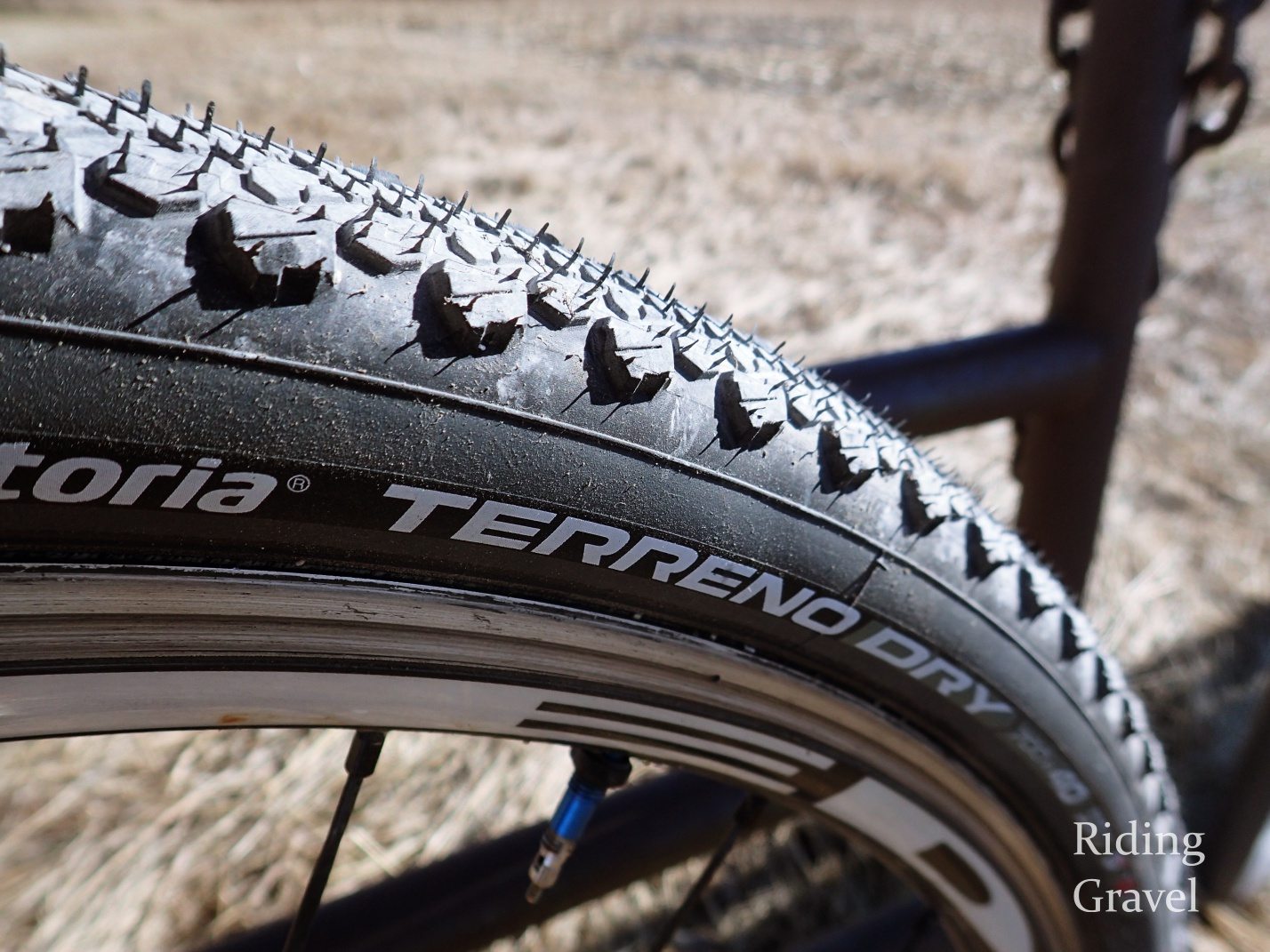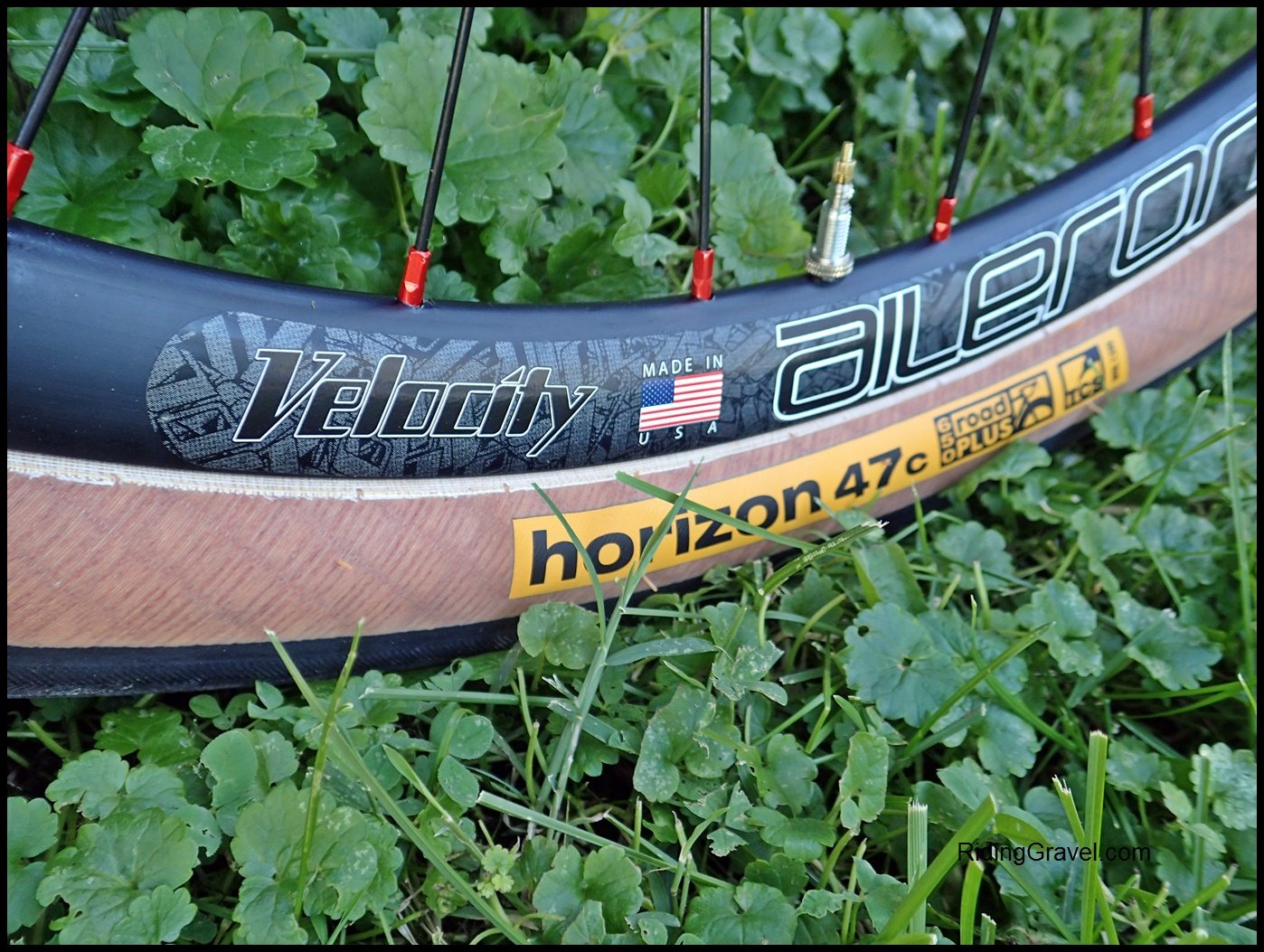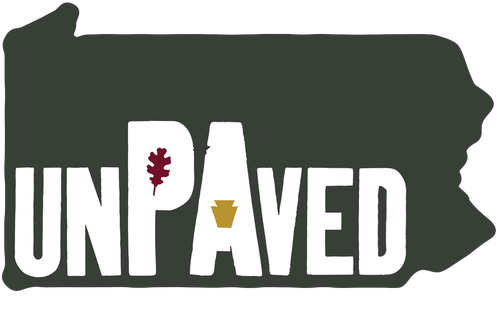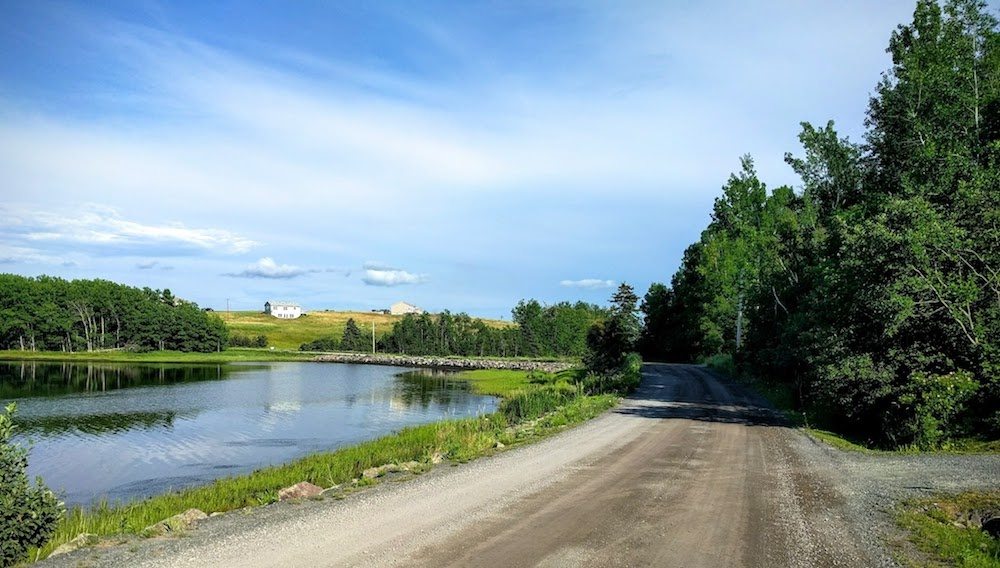<Back to News Home |
Editor’s Note: We at Riding Gravel are pleased to present another ride report. This time from our contributor, John Ingham, who shares his experiences from the most recent running of the “Heck of the North” gravel/back roads event which starts and ends in Two Harbors, Minnesota.

Ride Report: Heck of the North 2017
aka: A Heck of a Heck- by John Ingham
The weather could not have been better for the 105 miles of the 2017 Heck of the North. The day started at a chilly 46 degrees and warmed to the mid-sixties in the afternoon, with only a few scattered clouds. The new course itself is exceptionally scenic. Staying to the north, it now avoids the outskirts of Duluth and runs for the most part through backwoods. The mix of gravel roads, snowmobile trails, and logging roads took us through mixed conifer-hardwood forests, with ponds, streams, and wetlands, and almost no traffic. Gravel races usually traverse lovely country, but the new Heck is in an aesthetic class all its own. As I was chatting with a seasoned, widely traveled gravel racer while rolling along on Drummond Grade, she exclaimed that this year’s Heck was the most beautiful gravel course she had experienced, ever, anywhere. It was a perfect fall day, leaves were starting to turn, and after such a wet summer the conifers were vibrant green. Jeremy Kershaw, the director of the Heck races, views good gravel courses as “found art” and urges us to “ride the good line.” The new Heck is picture perfect and better than good.

It is also rugged and remote. Many riders lacked cell coverage. The tracking app Mary and I were trying out failed after about an hour. I definitely felt like I was out there. I know of two riders who had long hikes after mechanical failures. The race requires commitment. The feeling of being committed beyond civilization is one of the appeals of long gravel races for me. It can be eerie and unnerving, however, and it is probably not for everybody.

The Heck has always had a reputation for being challenging and was always intended to be so, as the origin of the word “heck” implies. This year seemed considerably harder than two years ago, but then the course has changed and I am two years older, didn’t sleep well the two nights before the race, and had to deal with more than the usual amount of muck and mud. To some degree, the most serious challenge, or the worst pain, is the challenge or pain we are experiencing in the moment. Challenge and pain are also subjective in part, and so can vary from one individual to the next.

We would like some objective data. The ubiquitous Ian Hoogendam, (Male winner of the 105-mile 2017 Heck), provides a benchmark of sorts. He did the 2016 Almanzo 100, which is always challenging because of its 8,000 feet of elevation gain but was made more so in 2016 by high winds. Ian also did the 2017 Westside Dirty Benjamin 100. Riders had to deal with extreme heat, high winds, and fresh gravel. One rider called it “hell.” A couple of top riders said it was just as difficult as this year’s Dirty Kanza. Ian averaged about the same speed in all three races. My guess is that the new Heck is at least as challenging if not tougher than the toughest 100-mile gravel races anywhere. It is not nearly as hilly as the Almanzo but it makes up for its moderate elevation gain with tortuous logging roads and soggy snowmobile trails. This year they were made more daunting by heavy summer rains. Powering through them took a toll on riders and bikes. The wreckage I witnessed or heard about included a broken chain, flats, a ruined bottom bracket, and a stripped crank arm.
The Heck is not all hard going. There are miles of smooth gravel. Out of the gate, the peloton was flying on East Alger Grade. Many riders were going 17 to 20 mph at times and the leaders of course were going faster yet. It was enough to make me hope that even us old codgers would be back at the Castle Danger Brewery for IPAs before dinner. Fat chance. Bear Pit Road soon disabused me of any such happy ending, and there were many more rude awakenings yet to come. A gnarly stretch into the check point seemed more like mountain biking than gravel racing. Still, I covered the front half in about four and a half hours with riders behind me. I was surprised and touched to find not only wife Mary but also Susan and Scott (directors of the Fiddlin’ Fifty) there to greet and encourage me. Thinking I was through the principal difficulties, I remounted the bike with thoughts of finishing in another five hours or so.

Riding alongside Jim Blanchard (67), I shared my optimism. Having done the new Heck last year, he knew better and responded with a pithy but ominous comment about recent rains and puddles on the snowmobile trails. We were moving well as I fell in behind him. But suddenly I dropped and jammed my chain. It was jammed really good in fact and, with fear of breaking something, it took time to free it up. By then Jim was long gone. Too bad. He knew the route. I didn’t realize it then, but the day was starting to go south for me as far as finishing before dark.
The first of two costly mistakes occurred at mile 57 on Laine Rd. It was a classic follow-the-leader gravel-riding mistake, and I should have known better. Expecting a turn, my eyes were focused on a rider up ahead, thinking I could just follow him—Johnathon Jenkins (32). He had already missed the turn on to the North Shore State Trail. After wasting a half an hour or so looking around and talking to hikers, lead riders returning from the southern loop went flying by but said enough to get us back on track. We had to climb back up the big hill, however. Embarrassing because Jeremy’s cue sheets are always accurate and he had posted the turn besides. Damn!

The hill took something out of us, and now the first of several sections of the North Shore State Trail began their debilitating work. After carrying our bikes through huge puddles, it was sometimes impossible to get bikes going again in the thick mud, so we would slog to the top of the next rise in order to get a downhill start. Other times, we would stand up and power through the muck, with rear wheels spinning, wondering if drive trains would withstand the all-out efforts and abrasive grit. Running the puddles at speed was an option but it risked the front wheel sinking into the mud and going over the handlebars. Quads were turning into screaming jelly. More than once, John said, “This is brutal.”
I could sense time slipping away. When we began to move better, John would say, “I think we are going to be okay.” But we were not getting up to real speed that often or for very long, and more mud was yet to come, so I would say, “I’ve heard that before.” I knew we were going to finish in the dark. On one section of the North Shore State Trail, John stopped to answer what he feared (wrongly, it turned out) were emergency phone calls. I forged ahead. After waiting a while at Fox Farm Road for him to catch up, I offered him the last of my pocket bacon. Later, he split his Shot Blocks with me.
With the sun down and temps dropping, we were relying on John’s smart phone light to read the cue sheet—I had removed my prescription sunglasses and wasn’t much help. And anyway, both of us were probably semi-delirious by then. We turned right rather than left on Drummond Grade. Slightly downhill on hero gravel, we were hammering it—like horses heading for the barn. Great fun until we realized we had gone too far without finding the turn. I allowed as how we needed to get back to the intersection and start over. We could see a bike light at the intersection. Happily, it was John’s friend Nick, who was still conscious enough to tell the difference between right and left.
Clayton, another one of Nick’s friends, was somewhere behind him, maybe broken down, maybe bailing. We needed motion for warmth, so we decided to keep going. We hung a left and found our missing double track right away.
At least I learn from mistakes. Well, sometimes. Two years ago, finishing in the dark and nearly hypothermic on that stretch, my cheapo bike light was useless. After the race, I went to REI and bought a bad-boy NiteRider 750. Fantasizing that with all my squats, lunges, and long training rides during the summer I wouldn’t need it, I almost left it in the car (wishful thinking can be dangerous). Fortunately, the Nightrider really helped.
Actually, the race could not have been better, finishing time not withstanding. The 12:30-hour effort was grueling, to be sure, but partly because of that it was also one of my most satisfying single-day adventures ever. John called this year’s Heck an adventure he will remember for the rest of his life. During the race I could not help but reflect on how lucky I was to be alive and riding my bike in what some would call “God’s country.” Even the lack of sleep and resulting fatigue and mistakes seemed okay. If it had been otherwise, if I had gone faster, if I had seen the turn, I would not have had the pleasure of riding with John. It would have been a different day, but not necessarily a better one. I reflected too on the others I had met and chatted with along the way. What were the odds of riding with such great people, in a super-beautiful place, on such a fine day? The problems, mistakes, and pain were part of all this magical coincidence and improbability, unreal beauty and amazing grace.
John, Nick, and I crossed the finish line together. Clayton finished lanterne rouge, an hour later in 13.30 hours in what had to have been an epic effort. 194 riders of 202 starters completed the shorter 56-mile version of the race. 135 riders of 148 starters finished the 105 miles. In the full Heck, Ian Hoogendam came in first at 5:56. Jennifer Youngworth was the first female in at 7:39.
 About The Author: John Ingham is Professor Emeritus of Anthropology at the University of Minnesota. He rode a hybrid bike on trails for years. When he retired in 2011, he renewed his earlier passions for rock climbing, mountaineering, and back packing and began doing longer rides. He has been gravel racing for two years and has completed various races, including the Heck of the North, the Almanzo 100, and the Dirty Lemming 100. Now 76, he appears to be the oldest rider in Minnesota completing major gravel races.
About The Author: John Ingham is Professor Emeritus of Anthropology at the University of Minnesota. He rode a hybrid bike on trails for years. When he retired in 2011, he renewed his earlier passions for rock climbing, mountaineering, and back packing and began doing longer rides. He has been gravel racing for two years and has completed various races, including the Heck of the North, the Almanzo 100, and the Dirty Lemming 100. Now 76, he appears to be the oldest rider in Minnesota completing major gravel races.
Discuss and share your questions or thoughts about gravel bikes, gear, events and anything else on the Riding Gravel Forum











Great write up. I rode this on my Mukluk and was so happy on the trail sections. I was definitely slower on the gravel and road sections, but the feeling of being able to pass people who were riding skinnier tires was very energizing. In fact, I felt the best right after the trail sections because of the changed up riding position while on the trails, and the psycological lift of having passed so many others.
Thanks Bill. I probably should have been on my Fargo 2 rather than the Warbird. It’s not that much slower on gravel roads and would have been better in the mud and on the logging roads. Per your experience, John and I played tag with a fat biker in the last third of the race. We were faster on gravel, but he was much faster in the mud and finished well ahead of us.